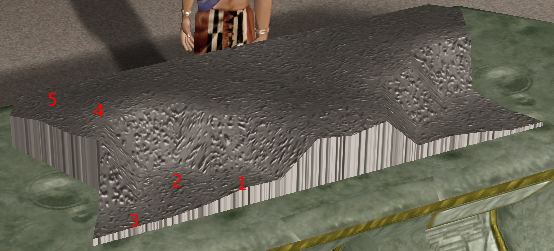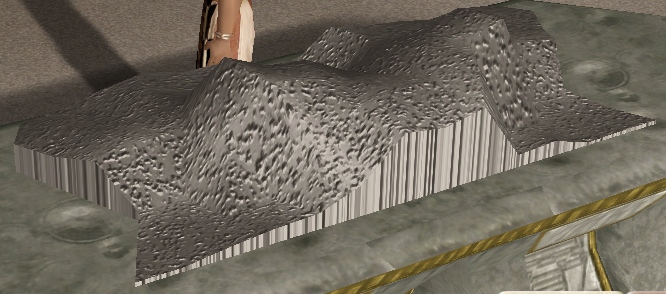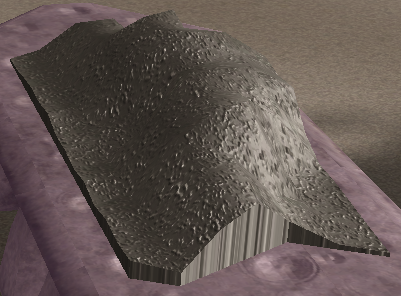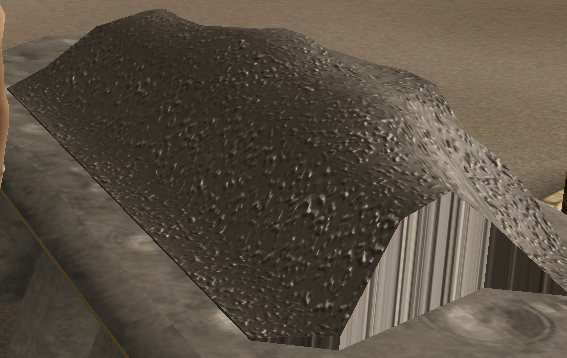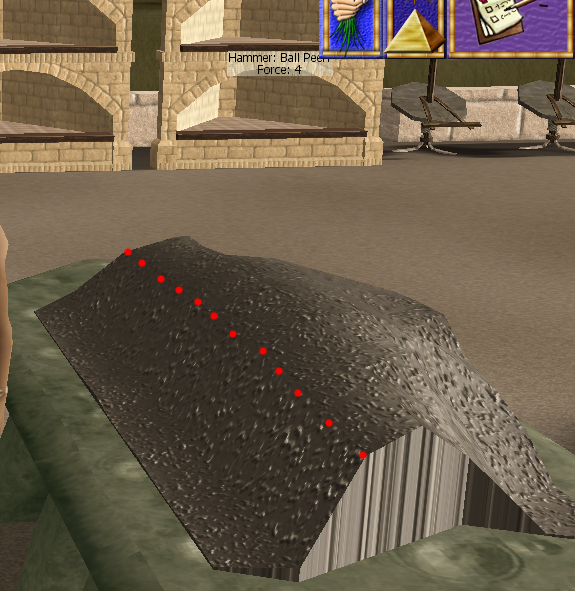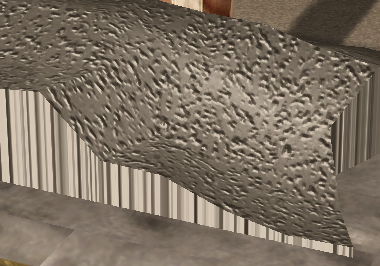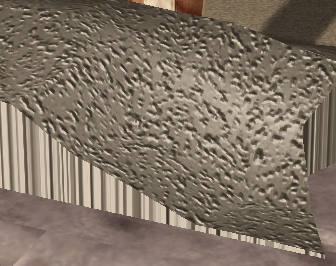The Wiki for Tale 5 is in read-only mode and is available for archival and reference purposes only. Please visit the current Tale 11 Wiki in the meantime.
If you have any issues with this Wiki, please post in #wiki-editing on Discord or contact Brad in-game.
User:BlueGrass/Hatchet
Special thanks to Shams from T3 for Hatchet Guide
This guide will demonstrate the basics of forming a hatchet. The hatchet you see me crafting was made out of iron and reached a final quality level of 8015. Now, we begin ...
The most important step in making a hatchet is the initial shaping. Since our tools can only push DOWN on the material it is vital that we reach the desired height quickly and effectively. Take the shaping mallet at force 9 and begin by hitting each tail corner three times in a triangle shape. The first strike should be about two hammer widths in, the second should flatten the area near where the material is 'pinched' and then the last hit should be on the rear tail. Do this to each end. You should have something that looks like this after the first six hits:
After the three initial hits on each side, you need to hit down the sides in the middle and the front. Two more hits on each side, moving from the middle to the front should do the trick.
The next strikes should fall along the 'blade' or front of the shape. Continue using the shaping mallet at force 9 and work from the outside to the inside. Make sure that your mallet is landing completely on the shape, but always keeping the edge of your mallet along the front edge. If you work inwards from both sides with alternating strokes, you should end up with this shape:
You see those two peaks near the center of my shape? You'll probably be getting big hills like this too. If you do, the cure is a swift smack with a ballpeen hammer at around 6 force. It will turn those mountains into manageable mole-hills. After two hits from a ballpeen hammer, our shape now looks like this from the front:
Which is an excellent view for our next step, which will bring out the hatchet-ey goodness in our simple lump of metal. Continue using your shaping mallet at force 9. Using only HALF of the width of the mallet, which means that you'll be clicking right along the front edge of the shape, hit in a straight line down the shape, overlapping your strikes evenly. It should take about eight hits. You'll want to see this when you're done:
Whew! Take a deep breath and relax. Remember, there is no time limit and you've just done a lot of work. Our basic shaping is complete and so we're going to put away our force 9 shaping mallet for now. We're going to move into a phase of smoothing out the top and minor fixes. Now, for this bit experience is the best teacher, and so I'd recommend that you play around with the shaping mallet and the round hammer. They are very similar, but the shaping mallet makes differences over a wider area, and the round mallet affects points closer to it, but more seriously than the shaper.
Your task now is to use those two tools at 4 or 5 force to smooth out the top. You're also welcome at this point to use the ballpeen to whack any glaring single-node errors, but don't do too much! We're just trying to make things a little closer to the goal, like this:
Now, let's polish off the blade. Get your shaping mallet out and crank it up to 8 force. We're going to redo the half-way shaping mallet routine all the way down the blade. When you're done, select your tungsten chisel at force 9 and move down the blade with about four hits. Your shape has magically become this very hatchet-shaped object:
Now, working on the blade will have forced extra material into your ridge/bulge along the top of your hatchet. You're going to want to temper the slope with a ballpeen hammer, at around 4 force. This is a very delicate step but one that will deliver hundreds of quality points to your hatchet. I suggest that you open the following two images in separate tabs in your web browser in order to see exactly what is happening here. With your force 4 ballpeen, start at one end of your hatchet and move in a perfectly straight line along the sloping face to the other end, tapping every node along the way. You should be able to do this without moving your camera. Observe that in the second image I have included the quality ratings for three successive hits. You can see for yourself how imporant these taps are for improving your shape:
Now, in the above image the very top ridge of my shape was too high and pointy. The fix for this is the tungsten chisel at force 3 or 4, just three taps along the top in a straight line will temper that ridge as well as moving material towards the back of your shape, which is where I'll give you the last pointers.
At this point in your hatchet-making, we're done with grand statements. From here on out it is all about the ballpeen, baby. My process looks like pushing the 'g' button very rapidly, looking for areas of my shape which are higher than the goal shape, and then figuring out how to use a 3 or 4 force ballpeen to tap them where I want them. Along the back you'll find many uses for the ballpeen. Here is an example of a problem I ran into while making this hatchet:
And here is the same shape after two swings of a ballpeen hammer (and the shaping mallet tail stomp, described below):
There is a specific technique to finishing off the hatchet's little flat wings on the back. Use a force 9 shaping mallet and strike right along the edge, but one node towards the center. It will leave a wide flat shape and impose very pleasant slopes on the areas near it. Use the ballpeen all along the areas around there - especially along the ridge on the sides - and you should have yourself looking at a 7k to 8k hatchet.
Congratulations!
